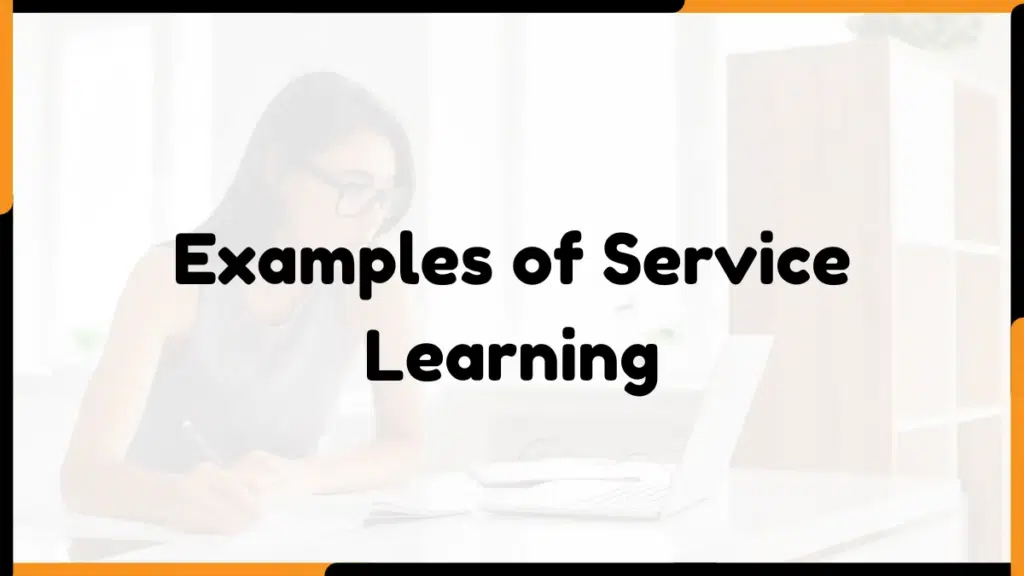10 Examples of Service Learning
Service learning is a teaching method that integrates community service with academic curriculum. It is a powerful way to help students learn and grow, both academically and personally.
There are many different ways to implement service learning in the classroom. Here are 10 examples of service learning projects that are easily adapted to different subjects and grade levels.

Examples of Service Learning
1: Tutoring and Mentoring Programs
Service learning can involve students tutoring or mentoring younger students in subjects where they excel, helping to improve academic performance and build valuable relationships.
2: Community Cleanups
Students can participate in local community cleanups, helping to beautify their neighborhoods, raise environmental awareness, and develop a sense of responsibility for the environment.
3: Soup Kitchens and Food Drives
Volunteering at soup kitchens or organizing food drives for local food banks are common service learning activities that help address issues of hunger and poverty in the community.
4: Elderly Care
Students can visit nursing homes or assisted living facilities to spend time with the elderly residents, providing companionship, and often gaining wisdom and perspective from their experiences.
5: Environmental Restoration
Service learning involve activities like tree planting, habitat restoration, or water quality testing to contribute to the preservation and improvement of local ecosystems.
6: Youth Mentoring Programs
High school students can mentor younger children, offering guidance and positive role models, which can have a profound impact on the younger students’ development.
7: Health and Wellness Initiatives
Engaging in initiatives like organizing health fairs, promoting healthy lifestyles, or participating in blood drives to support community health and well-being.
8: Building Homes for the Homeless
Service learning projects that involve construction or renovation of homes for homeless individuals and families can address homelessness and housing issues.
9: Supporting Special Needs Communities
Students can volunteer at centers that serve individuals with disabilities, offering their time and assistance to help improve the quality of life for these individuals.
10: Educational Workshops
Organizing educational workshops or after-school programs for underprivileged or at-risk youth, focusing on subjects such as STEM, arts, or life skills.
In your blog post, you can elaborate on each of these examples, sharing the impact they have on both the community and the students involved.
Discuss the benefits of service learning, such as personal growth, increased empathy, and a deeper understanding of social issues.
Highlight how these projects promote civic engagement and make a positive difference in the world.



Leave a Reply